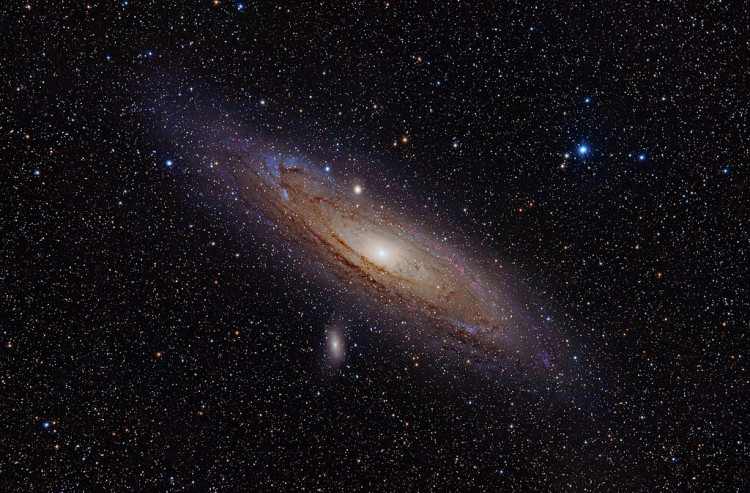Dark matter not only exists on the outskirts of galaxies but also connects them. For the first time, a map of the connections between thousands of nearby galaxies, including our own, has been created.
The map, made by a multinational team of scientists employing machine learning, could aid research into the nature of dark matter as well as the past and future of our local universe.
Dark matter is a mysterious material that accounts for 80% of the universe. It also serves as the backbone for what cosmologists call the cosmic web, the large-scale structure of the universe that regulates the motion of galaxies and other cosmic matter as a result of its gravitational influence.
The distribution of local dark matter, on the other hand, is currently unclear because of its inability to be measured directly. Instead, scientists must estimate its distribution from its gravitational effects on other celestial objects like galaxies.
"Ironically, it's easier to study the distribution of dark matter much further away because it reflects the very distant past, which is much less complex," Donghui Jeong, associate professor of astronomy and astrophysics at Penn State and a corresponding author of the study said.
"Over time, as the large-scale structure of the universe has grown, the complexity of the universe has increased, so it is inherently harder to make measurements about dark matter locally."
Previous attempts to map the cosmic web began with a model of the early universe, which was then recreated across billions of years. However, because this method is computationally intensive, it has yet to provide data that are detailed enough to observe the local universe.
The researchers in the latest study adopted an entirely different method, employing machine learning to create a model that predicts the distribution of dark matter based on information about the distribution and motion of galaxies.
The map successively reproduced known prominent structures in the local universe, including the Local Sheet (a region of space containing the Milky Way, nearby galaxies in the Local Group, and galaxies in the Virgo Cluster) and the Local Void (a relatively empty region of space next to the Local Group).
It also discovered a number of new structures that need to be investigated further, including tiny filamentary structures that connect galaxies.
"Having a local map of the cosmic web opens up a new chapter of cosmological study," Jeong said. "And we can study these filamentary structures directly, these hidden bridges between galaxies."





